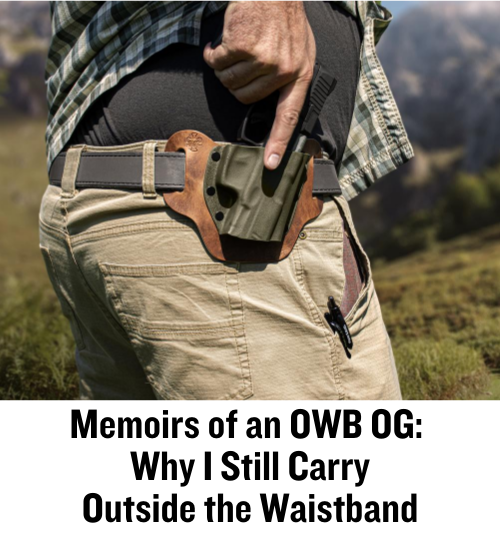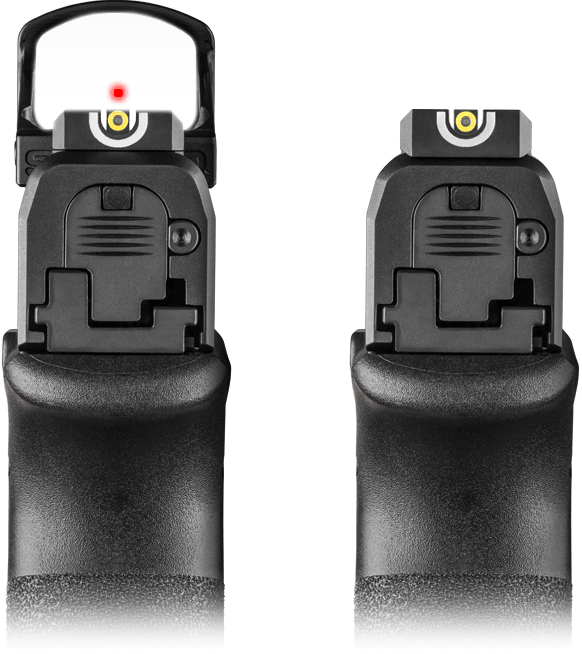In handgun shooting, the choice of sighting systems plays a crucial role in accuracy, speed, and overall effectiveness. Two prominent sighting systems are traditional iron sights and modern red dot sights. Each system has advantages and disadvantages that cater to different shooting needs and preferences. This article delves into the comparative analysis of traditional sights and red dots on pistols.
Traditional Sights: Advantages and Disadvantages
Advantages
- Reliability and Durability: Traditional iron sights are known for their robustness. They are less susceptible to environmental conditions like rain, dust, and mud. Unlike electronic sights, they do not rely on batteries or delicate electronics, making them highly reliable in harsh conditions.
- Simplicity: Iron sights’ simplicity makes them easy to use and maintain. Adjustments or calibrations that might be required with more complex systems are not necessary, and there are fewer potential points of failure.
- Cost-Effectiveness: Iron sights are generally more affordable than red dot sights. This cost advantage makes them accessible to a broader range of users, from casual shooters to those on a budget.
- Training and Skill Development: Iron sights can enhance fundamental shooting skills. They require shooters to develop better focus and alignment techniques, critical for overall shooting proficiency.
Disadvantages
- Speed and Precision: Iron sights can be slower to acquire, especially under stress or in low-light conditions. Aligning the front and rear sights takes time, which can be a disadvantage in dynamic shooting scenarios.
- Limited Low-Light Capability: Traditional sights are less effective in low-light or no-light situations. While some iron sights come with tritium inserts for better visibility in the dark, they still do not match the ease of target acquisition provided by illuminated red dot sights.
- Eye Relief and Focus: Iron sights require the shooter to focus on three points: rear sight, front sight, and target. This can be challenging, particularly for shooters with vision impairments or those with difficulty focusing on multiple planes.
Red Dot Sights: Advantages and Disadvantages
Advantages
- Speed and Accuracy: Red dot sights allow for faster target acquisition. The shooter simply needs to place the dot on the target, eliminating the need to align front and rear sights. This speed advantage is critical in competitive shooting and self-defense situations.
- Enhanced Visibility: Red dots provide superior visibility in various lighting conditions. Many models feature adjustable brightness settings, making them effective in bright sunlight or complete darkness. The illuminated reticle is particularly beneficial in low-light scenarios.
- Single Plane Focus: Red dot sights allow shooters to focus on a single plane. The shooter can maintain focus on the target while the dot remains superimposed on it. This can significantly reduce eye strain and improve shooting accuracy, especially for individuals with vision challenges.
- Improved Shooting with Both Eyes Open: Red dot sights enable shooters to keep both eyes open while aiming. This enhances situational awareness and peripheral vision, which is crucial in dynamic or defensive shooting situations.
Disadvantages
- Reliability Concerns: Red dot sights rely on electronics and batteries, which can fail. While high-quality models are designed to be robust, there is always a risk of malfunction or battery depletion. This can be a significant disadvantage in critical situations where reliability is paramount.
- Cost: Red dot sights are generally more expensive than iron sights. High-end models can be particularly costly, which may be a barrier for some shooters. Additionally, the need for regular battery replacements adds to the ongoing costs.
- Training Adaptation: Transitioning from iron sights to red dots can require adjustment and training. Shooters accustomed to traditional sights might find adapting to the new aiming process challenging and must invest time in practice to achieve proficiency.
- Durability Issues: While many red dot sights are designed to be durable, they are still more susceptible to damage from drops, impacts, and harsh environmental conditions compared to iron sights. The glass lens and electronic components can be points of vulnerability.
Parting Shot
The choice between traditional iron sights and red dot sights on pistols ultimately depends on the shooter’s needs, preferences, and intended use. Iron sights offer simplicity, reliability, and cost-effectiveness, making them suitable for various users and conditions. However, they can be slower and less effective in low-light situations.
On the other hand, red dot sights provide superior speed, accuracy, and low-light performance, making them ideal for competitive shooting and self-defense. Despite their higher cost and reliance on electronics, they offer significant advantages in dynamic shooting scenarios.
Ultimately, the decision should be based on carefully assessing individual requirements and the specific context in which the pistol will be used. Both sighting systems have merits and can complement each other when used appropriately.
ABOUT THE AUTHOR:

David Workman is an avid gun guy and a contributing writer to several major gun publications. As an NRA-certified instructor, David trains new shooters on basic handgun skills and CCW requirements and is a strong advocate for training as much as possible. “Real-life shootouts don’t happen at a box range.”
![]() You may also enjoy these popular articles:
You may also enjoy these popular articles:




©MTC Holsters, LLC and CrossBreed Holsters Blog, 2024.
Unauthorized use and/or duplication of this material without express and written permission from this site’s author and/or owner is strictly prohibited. Excerpts and links may be used, provided that full and clear credit is given to David Workman and the CrossBreed Blog with appropriate and specific direction to the original content.

